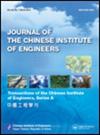Digitization of ECG paper records based on density and prediction methods
IF 1.2
4区 工程技术
Q3 ENGINEERING, MULTIDISCIPLINARY
Journal of the Chinese Institute of Engineers
Pub Date : 2023-10-16
DOI:10.1080/02533839.2023.2262726
引用次数: 0
Abstract
ABSTRACTTraditional 12-lead ECGs have the common problem of lead waveform crossover. Importantly, this problem leads to difficulty in extracting lead waveforms and causes signal distortion during the digitization of ECGs. In this paper, an ECG digitization method that combines density clustering and curve prediction is proposed, and it can effectively solve the issue of lead waveform crossover while also minimizing signal distortion. This method first uses the image preprocessing technique to remove the background mesh, and second, the density and prediction methods are used to solve the lead waveform crossover. Finally, morphological and vertical scanning methods are used to digitize the lead waveform. In addition, experimental verification is carried out on a large quantity of ECG records provided by Yifu Hospital, which is affiliated with Nanjing Medical University. Furthermore, five indicators are adopted for quantitative measurements and comparisons between the reconstructed signals and original waveforms. The comparison results show that the accuracy of the method is 95.5%, and this verifies the effectiveness of the algorithm.CO EDITOR-IN-CHIEF: Yuan, Shyan-MingASSOCIATE EDITOR: Yuan, Shyan-MingKEYWORDS: 12-lead ECGlead waveform crossoverdensity clusteringECG digitalization Nomenclature APR=average P-R intervalAQRS=average QRS intervalAQT=average Q-T intervalAR=average R waveD=lead waveform pixel point coordinate setECG=electrocardiogramHR=heart rateHSV=hue, saturation, valueIo=the calculated result of the original waveformIr=the calculated result of the reconstructed waveformMinPts=minimum number of samples in epsNRMSE=normalized root-mean-square errorPDVD=period distance vertical directionε=distance thresholdDisclosure statementNo potential conflict of interest was reported by the author(s).基于密度和预测方法的心电纸面记录数字化
摘要传统的12导联心电图普遍存在导联波形交叉的问题。重要的是,这个问题导致在心电图数字化过程中难以提取引线波形并造成信号失真。本文提出了一种结合密度聚类和曲线预测的心电数字化方法,该方法可以有效地解决引线波形交叉问题,同时使信号失真最小化。该方法首先利用图像预处理技术去除背景网格,然后利用密度和预测方法解决引线波形交叉问题。最后,采用形态学和垂直扫描方法对引线波形进行数字化处理。并对南京医科大学附属逸夫医院提供的大量心电记录进行实验验证。采用5个指标对重构信号与原始波形进行定量测量和比较。对比结果表明,该方法的准确率为95.5%,验证了算法的有效性。副主编:袁淑明12导联心电图波形交叉密度聚类心电图数字化术语APR=平均P-R间隔aqrs =平均QRS间隔aqt =平均Q-T间隔ar =平均R波波=导联波形像素点坐标集g =心电图hr =心率hsv =色相、饱和度valueIo=原始波的计算结果formir =重构波的计算结果minpts = epsn最小样本数rmse =归一化均方根errorPDVD=周期距离垂直方向ε=距离阈值披露声明作者未报告潜在的利益冲突。
本文章由计算机程序翻译,如有差异,请以英文原文为准。
求助全文
约1分钟内获得全文
求助全文
来源期刊
CiteScore
2.30
自引率
9.10%
发文量
57
审稿时长
6.8 months
期刊介绍:
Encompassing a wide range of engineering disciplines and industrial applications, JCIE includes the following topics:
1.Chemical engineering
2.Civil engineering
3.Computer engineering
4.Electrical engineering
5.Electronics
6.Mechanical engineering
and fields related to the above.

 求助内容:
求助内容: 应助结果提醒方式:
应助结果提醒方式:


